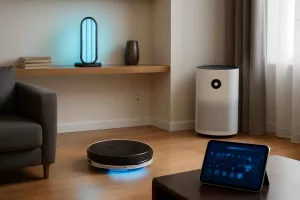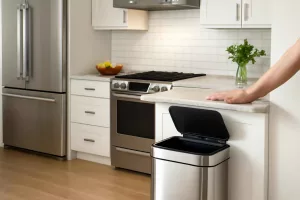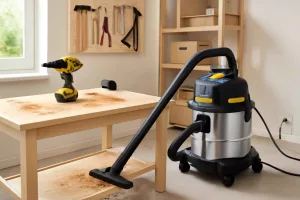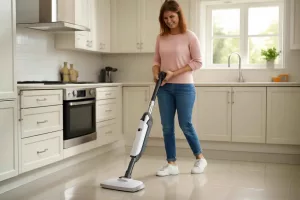Introduction to Self-Emptying Robot Vacuums
Self-emptying robot vacuums represent the latest innovation in automated home cleaning. Instead of manually emptying the dustbin after each cycle, these robots dock themselves at a base station that automatically evacuates debris into a larger container. This automation reduces maintenance, making daily cleaning more convenient for busy households.
In today’s market, self-emptying models have become increasingly popular among pet owners and allergy sufferers. With the ability to run for weeks without intervention, they provide uninterrupted cleaning performance, capturing fine dust and pet hair in one seamless process.
Evolution of Robot Vacuums
The concept of autonomous floor cleaning dates back to the early 2000s, but it wasn’t until iRobot introduced the first consumer-grade Roomba in 2002 that robot vacuums gained traction. Over the years, brands like Neato, Ecovacs, and Roborock added advanced navigation, mapping, and scheduling features.
Self-emptying bases debuted commercially around 2018 with the Roomba i7+. Since then, most leading brands have released models with this feature, refining bag capacity, noise levels, and suction to meet diverse cleaning needs.
Benefits of Self-Emptying Bases
One of the primary benefits is reduced manual intervention. Homeowners no longer need to empty the bin after every job, since the base station can hold four weeks’ worth of debris on average. This is particularly valuable for households with pets or high foot traffic.
Additionally, self-emptying bases often include sealed bag systems that trap allergens and reduce airborne dust during disposal. Many models offer notifications via smartphone apps when the base station requires bag replacement.
What Has Changed Recently in November 2025
As of November 2025, self-emptying robot vacuums have seen significant refinements in capacity, power consumption, and AI-driven navigation. Manufacturers are focusing on quieter base stations, larger dust bags, and more seamless integration with smart home ecosystems.
These updates respond directly to consumer feedback collected over the past year, emphasizing user convenience and reliability across different flooring types and home layouts.
Advancements in Dust Bin Capacity
Earlier models typically held around 0.5 liters per emptying cycle, but 2025 releases now feature base bags ranging from 2 to 3 liters, enough for 30–45 days of cleaning at two cycles per day. This increase reduces supply costs and frequency of bag changes.
Some brands introduced reusable filters within the base station to extend service intervals and minimize plastic waste.
Improved Navigation and App Integration
Recent firmware updates have enhanced obstacle detection, enabling robots to avoid small objects like socks or pet bowls more reliably. LIDAR and camera fusion mapping now supports multi-floor zoning and automatic area recognition.
Mobile apps for iOS and Android have added voice control through Alexa and Google Assistant, and offer live video streaming on models equipped with onboard cameras.
How Self-Emptying Bases Work
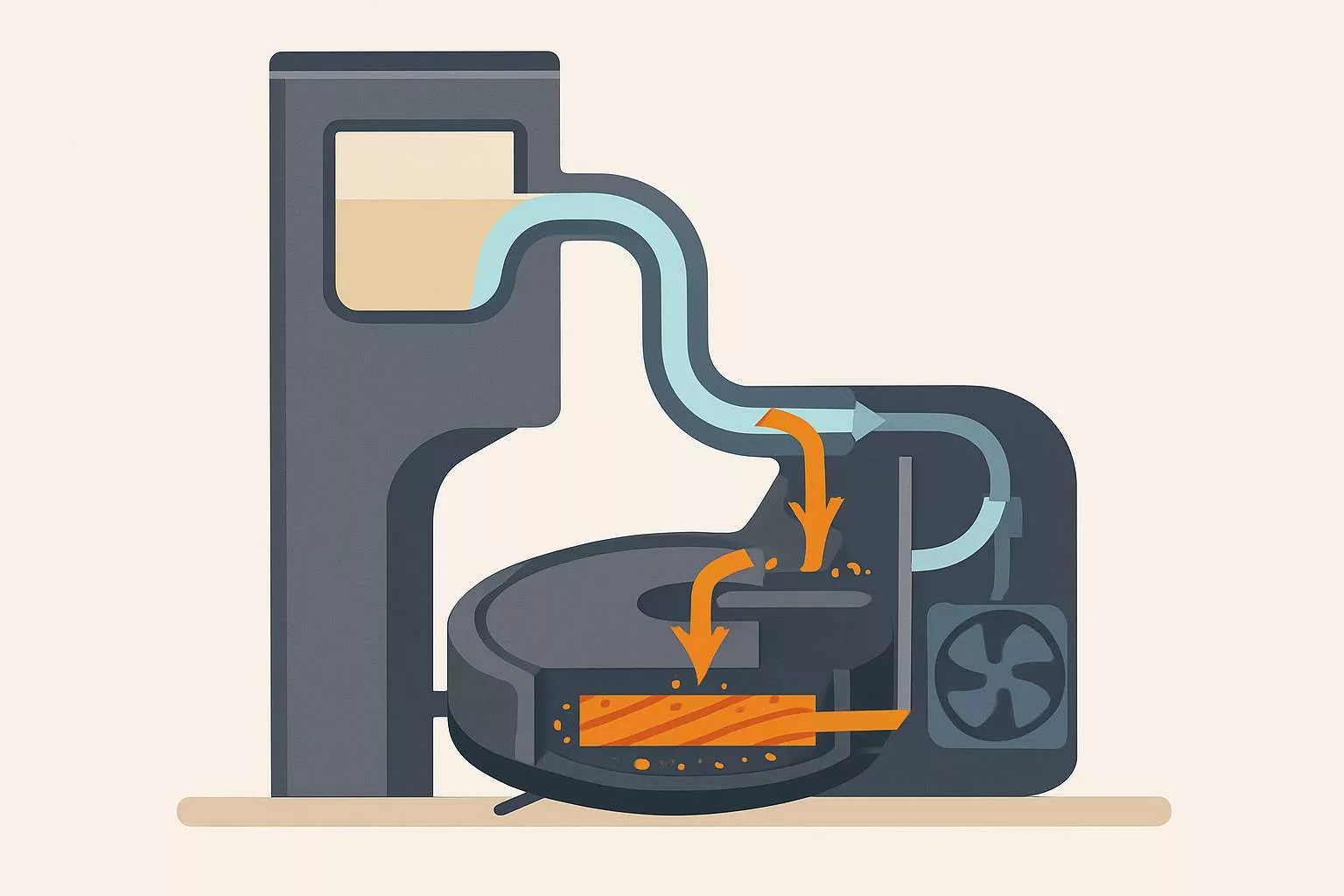
Self-emptying bases combine mechanical and pneumatic systems to extract debris from the robot’s onboard dustbin into a larger reservoir located in the docking station. When the robot returns to charge, a vacuum pump engages, drawing dust and hair through a sealed tube.
These pumps generate between 700 and 1,500 Pa of suction pressure, depending on model and base design.
Dust Extracting Mechanism
The process begins when sensors detect a full or nearly full robot bin. At the end of a cleaning run, the robot docks and triggers the base station. A high-efficiency motor then runs for 8–12 seconds to evacuate debris.
Bags in the base station often contain antimicrobial linings to inhibit mold and odor.
Base Station Designs
Designs vary between vertical towers and compact cubes. Vertical towers typically hold larger bags (up to 3 liters) but occupy more floor space. Cubes offer a lower profile but may require bag changes every two to three weeks under heavy use.
Most bases offer LED indicators or app notifications when the bag is 75% full or needs replacement.
Top Self-Emptying Robot Vacuums of 2025
Below are three standout models for different budgets and needs, each with a self-emptying base station.
iRobot Roomba j7+
The Roomba j7+ combines precision obstacle avoidance with a 2.5-liter Clean Base. Retailing at $799, it delivers 10× the suction power of the original Roomba 600 series. According to the iRobot official site, it can identify and avoid pet waste and charging cables.
Roborock S8+
Priced at $949, the Roborock S8+ features a 3-liter Auto-Empty Dock and 6,000 Pa HyperForce suction. LIDAR mapping and sonic mopping combine for deep clean capabilities. Detailed specs are available on the Roborock official site.
Ecovacs Deebot X1 Omni
At $1,199, the Deebot X1 Omni stands out for its all-in-one base that vacuums, washes, and dries both robot and mop pads. It holds 2.7 liters of debris and integrates with Amazon Alexa for voice commands, per the Ecovacs official site.
Comparison Table of Leading Models

This table summarizes key specifications of top self-emptying robot vacuums in 2025.
Price and Features Comparison Table
| Model | Price | Bin Capacity | Suction (Pa) | Run Time |
|---|---|---|---|---|
| Roomba j7+ | $799 | 2.5 L | 2,200 | 75 min |
| Roborock S8+ | $949 | 3.0 L | 6,000 | 180 min |
| Deebot X1 Omni | $1,199 | 2.7 L | 2,600 | 200 min |
Bin Capacity and Emptying Frequency
All three models can handle at least two cleans per day for 4–6 weeks without a bag change. The Roborock S8+ offers the longest interval at roughly 45 days under moderate use.
Key Features to Look For in Self-Emptying Vacuums

Choosing the right model depends on several factors, from suction power to smart home compatibility. Below are the most critical features to compare.
Suction Power and Cleaning Modes
Suction power, measured in pascals (Pa), determines how effectively a robot picks up fine dust and pet hair. Models under 3,000 Pa excel on hard floors, while those above 4,000 Pa handle carpets better. Adjustable cleaning modes—quiet, balanced, turbo—allow users to trade noise for performance.
App Connectivity and Smart Home Integration
Look for Wi-Fi connectivity, multi-floor mapping, and voice control via Alexa, Google Assistant, or Siri Shortcuts. Advanced apps let you set no-go zones, schedule specific room cleans, and monitor cleaning history.
Filter and Allergy Considerations
High-efficiency particulate air (HEPA) filters capture 99.97% of particles as small as 0.3 microns. Sealed systems prevent dust leakage during bin emptying. This is vital for allergy sufferers or homes with asthma patients.
Installation, Setup, and Maintenance Tips
Getting the most out of a self-emptying robot vacuum involves proper setup and regular upkeep. Follow these guidelines for a trouble-free experience.
Unboxing and Initial Setup
Place the base station on a flat surface against a wall, with at least 0.5 meters of clearance on either side. Connect to power and pair the robot using its mobile app. Perform a manual mapping run on a clean floor to establish an accurate layout.
Cleaning and Replacing Bags/Filters
Check the base station indicator weekly. Replace disposable dust bags every 4–6 weeks or when prompted by the app. Clean filters monthly by tapping out debris or rinsing per manufacturer guidelines. Always allow filters to dry completely before reinsertion.
Troubleshooting Common Issues
- If the robot fails to dock, ensure the base station sensors and robot charging contacts are free of debris.
- Address navigation errors by clearing clutter and re-running the mapping calibration.
- For reduced suction, inspect the dust tube for blockages or lint buildup.
Price vs. Value Analysis
Self-emptying robot vacuums range from $600 budget options to $1,200+ premium models. Understanding your cleaning needs helps determine the best return on investment.
Budget-Friendly Options
The Roomba i3+ at $599 offers a 2.4-liter base and 1,500 Pa suction—ideal for small homes or apartments. Roborock Q7+ at $699 provides similar specs with a 2.5-liter bag and 4,200 Pa suction, making it a top pick under $700.
Premium Models and ROI
For larger homes and deeper cleans, the Roborock S8+ and Deebot X1 Omni justify their higher prices with longer run times, advanced mop functions, and superior suction. Over time, reduced maintenance and improved air quality can offset the initial investment.
Pros and Cons of Self-Emptying Robot Vacuums
While self-emptying bases bring convenience, they are not without trade-offs. Consider the advantages and disadvantages before purchasing.
Advantages
- Hands-off maintenance for weeks at a time
- Sealed disposal bags minimize allergen exposure
- Automated scheduling and mapping deliver consistent cleanings
Disadvantages
- Higher upfront cost compared to standard robot vacuums
- Base stations occupy additional floor space
- Ongoing cost of replacement bags and filters
Conclusion and Future Outlook
Self-emptying robot vacuums have matured into reliable home cleaning solutions. In November 2025, models from iRobot, Roborock, and Ecovacs lead the market with strong suction, large-capacity bases, and smart home integration.
For most users, a mid-range model like the Roborock S8+ strikes an optimal balance between price and performance. Pet owners and allergy sufferers may prefer the Roomba j7+ for its advanced obstacle avoidance and sealed bag system.
Final Recommendations
Assess your home size, flooring types, and cleaning frequency before selecting a model. Prioritize high suction power, reliable mapping, and ease of maintenance to maximize long-term satisfaction.
Staying Updated
The robot vacuum market evolves quickly. This article may be updated with new releases, firmware improvements, and user feedback to help you make informed decisions in the months ahead.

